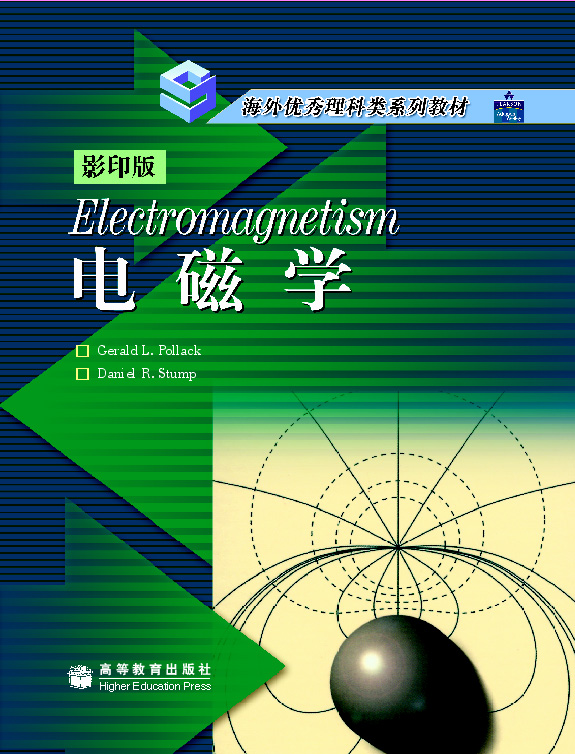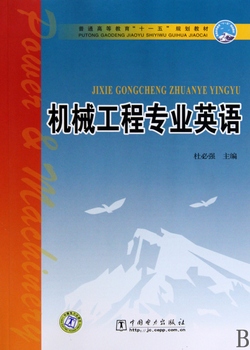- 地质出版社
- 9787116093973
- 1版
- 194280
- 49258925-4
- 平装
- 正16开
- 2015-07
- 240
- 156
- 工学
- 地质类
- H31
- 勘查技术与工程
- 本科
内容简介
《工程地质专业英语/普通高等学校教材》中内容摘引自国外经典的专业教材或科技论文,并经适当的节选和编译,补充了生词短语的解释,以及大量的疑难句段的中文注释和说明,课文给出了练习题以便巩固学习内容。《工程地质专业英语/普通高等学校教材》内容基本涵盖了工程地质基础知识和应用涉及的领域,适合普通高等学院工程地质(地质工程)本科专业作为专业英语学习教材,也可供岩土工程、地下工程等相关相近专业本科或研究生作为选择和参考性教材。
目录
前言
Introduction
Unit 1 Engineering Properties of Rocks (Part 1)
Unit 2 Engineering Properties of Rocks (Part 2)
2.1 The Nature of Soils
2.2 Particle Size and Analysis
2.3 Plasticity of Fine-grained Soils
2.4 Soil Compaction
Unit 3 Rock Mass Classification
3.1 Engineering Rock Mass Classification
3.2 Terzaghi's Rock Mass Classification
3.3 Classifications Involving Stand-up Time
3.4 Rock Quality Designation Index (RQD)
Unit 4 Pore Pressure and Effective Stress
4.1 Stress in the Ground
4.2 Groundwater and Pore Pressure
4.3 Effective Stress
4.4 Importance of Effective Stress
4.5 Volume Change and Drainage
4.6 Drained Loading, Undrained Loading & Consolidation
4.7 Rates of Loading and Drainage
Unit 5 In Situ Testing
5.1 Penetrometers
5.2 Shear Vane Test
5.3 Plate Load and Jacking Tests
5.4 Pressure Tests
5.5 In Situ Shear Test
Unit 6 Consolidation Theory
6.1 The Oedometer Test
6.2 Compressibility Characteristics
6.3 Preconsolidation Pressure
6.4 1-D Consolidation Settlement
6.5 Degree of Consolidation
6.6 Terzaghi's Theory of One-Dimensional Consolidation
6.7 Second Compression
Unit 7 Bearing Capacity
7.1 Stress Distribution in Soil
7.2 Foundation Failure
7.3 Bearing Capacity Factors
7.4 Contact Pressure
7.5 Allowable Contact Pressure For Rock Masses
Unit 8 Shear Strength (Part 1)
8.1 The Mohr——-Coulomb Failure Criterion
8.2 Shear Strength Tests
Unit 9 Shear Strength (Part 2)
9.1 Shear Strength of Sands
9.2 Shear Strength of Saturated Clays
9.3 The Critical State Concept
9.4 Residual Strength
Unit 10 Foundations for Buildings
10.1 Types of Foundation Structure
10.2 Bearing Capacity
10.3 Settlement
10.4 Methods of Ground Treatment
Unit 11 Embankment Dams: Introduction, Terminology, and Classification...
Unit 12 Methods of Slope Control and Stabilization
12.1 The Stability of Slopes
12.2 Reinforcement of Slopes
12.3 Drainage of Slopes
Unit 13 Debris Flow: Introduction, Observation and Measurement
13.1 Introduction
13.2 Observations and Measurements for Debris Flow
Unit 14 Natural Subsidence and Influence of Geological Processes
14.1 Introduction
14.2 The Meaning of Subsidence
14.3 Geological Cycle in Relation to Natural Subsidence
14.4 Sedimentary Basin Subsidence
14.5 Dolines, Swallow-holes, Sink-holes and Crown-holes
14.6 Subsidence Arising From Development of Subterranean Voids
14.7 Conclusion
Unit 15 Underground Caverns
15.1 Location of Underground Cavern
15.2 Stability of Underground Caverns
15.3 Influence of Joints
15.4 Excavation of Underground Caverns
Unit 16 Environmental Geology
16.1 Introductory Remarks
16.2 Geology and Regional Planning
16.3 Urban Planning
16.4 Waste Disposal
16.5 Geological Hazards
16.6 Environmental Impact Statements
16.7 Earthquake Hazards and Nuclear Power Stations
Unit 17 Tasks of Geological Investigation
17.1 Man as a Geological Agent
17.2 Regional Planning
17.3 Geological Analysis
17.4 Hydrogeological Analysis
17.5 Geological Investigation in Planning and.Building of Settlements...
References
Introduction
Unit 1 Engineering Properties of Rocks (Part 1)
Unit 2 Engineering Properties of Rocks (Part 2)
2.1 The Nature of Soils
2.2 Particle Size and Analysis
2.3 Plasticity of Fine-grained Soils
2.4 Soil Compaction
Unit 3 Rock Mass Classification
3.1 Engineering Rock Mass Classification
3.2 Terzaghi's Rock Mass Classification
3.3 Classifications Involving Stand-up Time
3.4 Rock Quality Designation Index (RQD)
Unit 4 Pore Pressure and Effective Stress
4.1 Stress in the Ground
4.2 Groundwater and Pore Pressure
4.3 Effective Stress
4.4 Importance of Effective Stress
4.5 Volume Change and Drainage
4.6 Drained Loading, Undrained Loading & Consolidation
4.7 Rates of Loading and Drainage
Unit 5 In Situ Testing
5.1 Penetrometers
5.2 Shear Vane Test
5.3 Plate Load and Jacking Tests
5.4 Pressure Tests
5.5 In Situ Shear Test
Unit 6 Consolidation Theory
6.1 The Oedometer Test
6.2 Compressibility Characteristics
6.3 Preconsolidation Pressure
6.4 1-D Consolidation Settlement
6.5 Degree of Consolidation
6.6 Terzaghi's Theory of One-Dimensional Consolidation
6.7 Second Compression
Unit 7 Bearing Capacity
7.1 Stress Distribution in Soil
7.2 Foundation Failure
7.3 Bearing Capacity Factors
7.4 Contact Pressure
7.5 Allowable Contact Pressure For Rock Masses
Unit 8 Shear Strength (Part 1)
8.1 The Mohr——-Coulomb Failure Criterion
8.2 Shear Strength Tests
Unit 9 Shear Strength (Part 2)
9.1 Shear Strength of Sands
9.2 Shear Strength of Saturated Clays
9.3 The Critical State Concept
9.4 Residual Strength
Unit 10 Foundations for Buildings
10.1 Types of Foundation Structure
10.2 Bearing Capacity
10.3 Settlement
10.4 Methods of Ground Treatment
Unit 11 Embankment Dams: Introduction, Terminology, and Classification...
Unit 12 Methods of Slope Control and Stabilization
12.1 The Stability of Slopes
12.2 Reinforcement of Slopes
12.3 Drainage of Slopes
Unit 13 Debris Flow: Introduction, Observation and Measurement
13.1 Introduction
13.2 Observations and Measurements for Debris Flow
Unit 14 Natural Subsidence and Influence of Geological Processes
14.1 Introduction
14.2 The Meaning of Subsidence
14.3 Geological Cycle in Relation to Natural Subsidence
14.4 Sedimentary Basin Subsidence
14.5 Dolines, Swallow-holes, Sink-holes and Crown-holes
14.6 Subsidence Arising From Development of Subterranean Voids
14.7 Conclusion
Unit 15 Underground Caverns
15.1 Location of Underground Cavern
15.2 Stability of Underground Caverns
15.3 Influence of Joints
15.4 Excavation of Underground Caverns
Unit 16 Environmental Geology
16.1 Introductory Remarks
16.2 Geology and Regional Planning
16.3 Urban Planning
16.4 Waste Disposal
16.5 Geological Hazards
16.6 Environmental Impact Statements
16.7 Earthquake Hazards and Nuclear Power Stations
Unit 17 Tasks of Geological Investigation
17.1 Man as a Geological Agent
17.2 Regional Planning
17.3 Geological Analysis
17.4 Hydrogeological Analysis
17.5 Geological Investigation in Planning and.Building of Settlements...
References








